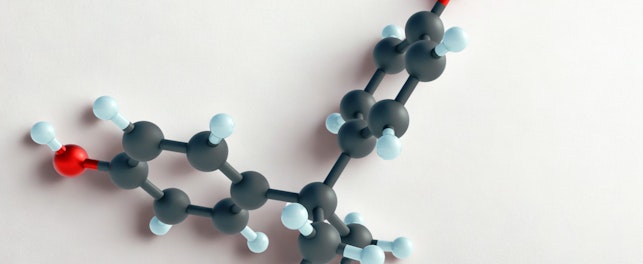Canada issues draft regulation revising requirements for lead, mercury and the migration of five elements in surface coating materials that are regulated by several pieces of legislation under the CCPSA. The new law will become effective 180 days after publication in Canada Gazette, Part II.
In Canada, the requirements for total lead, total mercury and the migration of five elements (antimony, arsenic, cadmium, selenium and barium) in surface coating materials are regulated by several pieces of legislation that were issued under the Canada Consumer Product Safety Act (CCPSA). These regulations and the requirements for these substances in surface coating materials include:
- The Surface Coating Materials Regulations (SOR/2016-193, ‘Regulation 1’)
- ≤ 10 mg/kg total mercury
- ≤ 90 mg/kg total lead in 1) surface coating materials and 2) applied surface coating materials on products for children (including furniture), pencils and artists’ brushes
- The Toys Regulations (SOR/2011-17, ‘Regulation 2’)
- ≤ 90 mg/kg total lead
- ≤ 0.1% for migration of antimony, arsenic, cadmium, selenium or barium (5% hydrochloric acid at 20 °C for 10 minutes)
- Prohibits mercury
- The Carriages and Strollers Regulations (SOR/2016-167, ‘Regulation 3’ - the requirements below are referenced to Regulation 2)
- ≤ 90 mg/kg total lead
- ≤ 0.1% for migration of antimony, arsenic, cadmium, selenium or barium (5% hydrochloric acid at 20 °C for 10 minutes)
- Prohibits mercury
- The Cribs, Cradles and Bassinets Regulations (SOR/2016-152, ‘Regulation 4’)
- ≤ 90 mg/kg total lead
- 0.1% for migration of antimony, arsenic, cadmium, selenium or barium (5% hydrochloric acid at 20 °C for 10 minutes)
- Prohibits mercury
- The Expansion Gates and Expandable Enclosures Regulations (SOR/2016-179, ‘Regulation 5’)
- 0.1% for migration of antimony, arsenic, cadmium, selenium or barium (5% hydrochloric acid at 20 °C for 10 minutes)
- Prohibits mercury
- The Playpens Regulations (SOR/2018-186, ‘Regulation 6’)
- ≤ 90 mg/kg total lead
- 0.1% for migration of antimony, arsenic, cadmium, selenium or barium (5% hydrochloric acid at 20 °C for 10 minutes)
- Prohibits mercury
On April 24, 2021, Canada published Regulations Amending Certain Regulations Made Under the Canada Consumer Product Safety Act (Surface Coating Materials) (‘the Proposal’) in Canada Gazette, Part I, to address gaps in the regulatory framework and align the requirements for surface coating materials across various regulations under the CCPSA for consistency. The Proposal includes, inter alia, several important provisions. It:
- Amends the definition of surface coating material in ‘Regulation 1’ for better consistency with ASTM F963 ‘Standard Consumer Safety Specifications for Toy Safety’. The requirement of no more than 90 mg/kg total lead applies to a sticker, film or other similar material (such as decal) that can be removed, or a surface coating material, that is applied to an accessible part of the following products:
- Furniture
- Products for children
- Pencils and
- Artist brushes
- Adds a definition of an accessible part to ‘Regulation 1’
- Expands the restriction of lead in applied surface coating materials on children’s furniture under ‘Regulation 1’ to those for consumer use (furniture for adults and children) for consistency with United States’ 16 CFR 1303 ‘Ban of Lead-Containing Paint and Certain Consumer Products Bearing Lead-Containing Paint)
- Revises the language to clarify that the 90 mg/kg total lead limit in applied surface coatings is applicable to accessible parts of the products in ‘Regulations 1 to 6’ for consistency with the Consumer Products Containing Lead Regulations (SOR/2018-83) and the general ban on lead for children’s products falling under the Consumer Product Safety Improvement Act of 2008 (CPSIA) in the US
- Deletes the outdated hydrochloric acid testing method (5% hydrochloric acid at 20 °C for 10 minutes) for the migration of antimony, arsenic, cadmium, selenium and barium from applied surface coating materials in Regulations 2 and 4 to 6 as industry will be able to use, for example, ASTM F963, EN 71-3 ‘Migration of Certain Elements’ and ISO 8124-3 ‘Migration of Certain Elements’
- Makes consequential amendments to the requirements for applied surface coating materials under ‘Regulations 2 and 4 to 6’ for consistency and having the same level of protection from lead exposure for products within the scope of the Surface Coating Materials Regulations (‘Regulation 1’). Examples of changes to ‘Regulations 2 and 4 to 6’ include:
- Identifying that a surface coating material and an accessible part have the same meaning as those in ‘Regulation 1’
- Describe a coating applied to a product to mean a surface coating material, as well as a sticker, film or other comparable material (such as a decal) that can be removed from the surface. The requirements for stickers, films and surface coatings are:
- ≤ 90 mg/kg total lead
- ≤ 1,000 mg/kg for migration of antimony, arsenic, cadmium, selenium or barium (unit changed from 0.1% for consistency with those for total lead and total mercury)
- ≤ 10 mg/kg total mercury (limit changed from ‘prohibited’)
- Limit the restriction of total lead, total mercury and migration of antimony, arsenic, cadmium, selenium and barium to coatings applied to accessible parts of the products
Consequential amendments to the Carriages and Strollers Regulations (‘Regulation 3’) will not be required as this regulation sets restrictions on lead, mercury and certain other harmful substances in applied surface coating materials indirectly by referencing the applicable sections of the Toys Regulations.
Highlights of certain changes under the Surface Coating Materials Regulations in the Proposal are summarized in Table 1.
| Clause/Title | Proposal to amend Surface Coating Materials Regulations (SOR/2016-193) | Surface Coating Materials Regulations (SOR/2016-193) |
|---|---|---|
| Clause 1 Definition - Surface coating material | A paint or other similar material, with or without pigment, that forms a solid film after it is applied to a surface and that can be removed. (revêtement) | A paint or other similar material, with or without pigment, that dries to a solid film after it is applied to a surface but does not include material that becomes a part of the substrate. (revêtement) |
| Clause 1 Definition - Accessible part | Any part of a product that may be touched, licked, mouthed or swallowed during reasonably foreseeable use of the product. (partie accessible) | No definition |
| Clause 6 Lead content | Products with Applied Stickers, Films or Surface Coating Materials Lead content
| Products with An Applied Surface Coating Material
|
According to the Proposal:
- Comments will be accepted until July 3, 2021
- The amendments will become effective on the 180th day after the day on which they have been published in the Canada Gazette, Part II
SGS is committed to providing information about development in regulations for consumer products as complimentary services. Through a global network of laboratories, SGS provides a wide range of services including physical/mechanical testing, analytical testing and consultancy work for technical and non-technical parameters applicable to a comprehensive range of consumer products. In the end, it’s only trusted because it’s tested. Contact us for more information or visit our website.
For enquiries, please contact:
Hingwo Tsang
Global Information and Innovation Manager
t: (+852) 2774 7420
© SGS Group Management SA - 2021 - All rights reserved - SGS is a registered trademark of SGS Group Management SA. This is a publication of SGS, except for 3rd parties’ contents submitted or licensed for use by SGS. SGS neither endorses nor disapproves said 3rd parties contents. This publication is intended to provide technical information and shall not be considered an exhaustive treatment of any subject treated. It is strictly educational and does not replace any legal requirements or applicable regulations. It is not intended to constitute consulting or professional advice. The information contained herein is provided “as is” and SGS does not warrant that it will be error-free or will meet any particular criteria of performance or quality. Do not quote or refer any information herein without SGS’s prior written consent.



